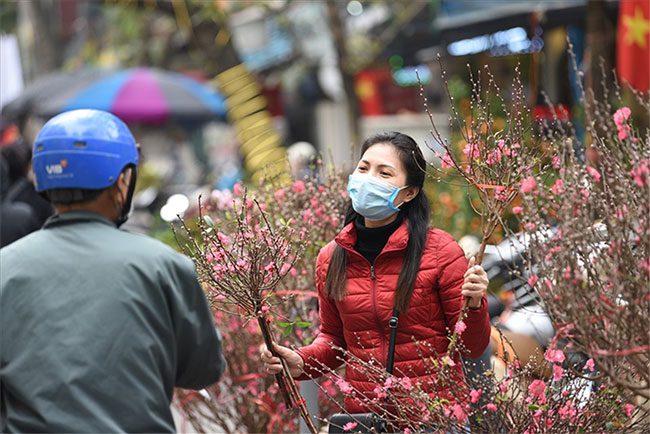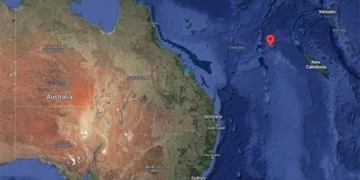On January 27-28, the cold air will sweep through the northern region, and on the first day of the Lunar New Year, an additional cold front will bring chilly rain, with temperatures in the plains ranging from 14-23 degrees Celsius.
Mr. Vu Van Thang, Director of the Meteorological and Climate Research Center (Institute of Meteorology, Hydrology and Climate Change), stated that after the cold spell from January 22-29, from January 30 to February 5 (20-26 of the last lunar month), the northern region will experience warm sunshine, with temperatures fluctuating between 19-26 degrees Celsius, except for some mountainous areas that will still be very cold.
From February 6 to February 9 (27 of the last lunar month to the 2nd day of the Lunar New Year), the cold air will descend, causing a chill in the northern region, with spring rain expected on the night and morning of the 1st and 2nd days of the Lunar New Year. In the plains, the lowest temperature will be around 15-17 degrees Celsius, and the highest will be 20-23 degrees Celsius, with the last day of the Year of the Cat and the first day of the Year of the Dragon reaching 23-24 degrees Celsius.
Due to the high terrain, the Northwest region will have a minimum temperature of 13-15 degrees Celsius, with high mountains at 10-12 degrees Celsius; the maximum temperature will be 20-22 degrees Celsius. The Northeast region will see a minimum of 14-16 degrees Celsius, with mountainous areas at 12-14 degrees Celsius; the maximum will also be 20-22 degrees Celsius.

From February 6 to February 9 (27 of the last lunar month to the 2nd day of the Lunar New Year), the cold air will cause a chill in the northern region.
Mr. Hoang Phuc Lam, Deputy Director of the National Center for Meteorological and Hydrological Forecasting, also predicted that from February 6 to February 12 (27 of the last lunar month to the 3rd day of the Lunar New Year), the northern region will be affected by cold air, but it is less likely to be as strong as the current spell, therefore, it will not cause hail or storms like during the Lunar New Year in 2020. The eastward-shifted cold air will bring moisture from the sea, leading to light rain and drizzle at night and in the morning.
The Central Provinces will experience cold weather due to the influence of cold air until the 29th of the last lunar month, with rain expected. By the last day of the lunar year and New Year’s Eve, the rain will decrease, and temperatures will rise; on the 2nd and 3rd days of the Lunar New Year, there may be sunny intervals. The North Central region will see a minimum of 17-19 degrees Celsius and a maximum of 23-25 degrees Celsius. The South Central region will have a minimum of 21-25 degrees Celsius and a maximum of 25-27 degrees Celsius.
The South and Central Highlands are expected to be sunny, with the Southeast region experiencing localized heat (with maximum daily temperatures exceeding 35 degrees Celsius). During the Lunar New Year, nighttime temperatures in Ho Chi Minh City will be around 23 degrees Celsius, while daytime temperatures will reach 35-36 degrees Celsius.
The northern region is currently experiencing a severe cold spell that began on January 22. For four consecutive days, all 25 provinces in the northern region recorded minimum temperatures below 10 degrees Celsius. Numerous mountain peaks over 1,000 meters, such as Mau Son (Lang Son), Thuong Phung (Ha Giang), O Quy Ho (Lao Cai), and Phia Oac (Cao Bang), have seen thick frost.


















































